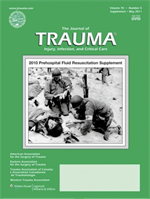
TRAUMA
Biological plating is a feasible fixation method for comminuted subtrochanteric fractures
J Trauma. 2007 Dec;63(6):1283-9166 patients with comminuted subtrochanteric fractures were randomly assigned to receive one of two types of fixation devices during surgical treatment. One group underwent biological plating with a dynamic condylar screw (DCS) and the other group underwent intramedullary nailing with a Russell-Taylor reconstruction nail (RTRN). Results showed that both methods were comparable and DCS was a viable method of treating young patients with comminuted subtrochanteric fractures.
Unlock the full ACE Report
You have access to {0} free articles per month.Click below to unlock and view this {1}
Unlock NowCritical appraisals of the latest, high-impact randomized controlled trials and systematic reviews in orthopaedics
Access to OrthoEvidence podcast content, including collaborations with the Journal of Bone and Joint Surgery, interviews with internationally recognized surgeons, and roundtable discussions on orthopaedic news and topics
Subscription to The Pulse, a twice-weekly evidence-based newsletter designed to help you make better clinical decisions
Exclusive access to original content articles, including in-house systematic reviews, and articles on health research methods and hot orthopaedic topics
Or upgrade today and gain access to all OrthoEvidence content for just $1.99 per week.
Already have an account? Log in


Subscribe to "The Pulse"
Evidence-Based Orthopaedics direct to your inbox.
{0} of {1} free articles
Become an OrthoEvidence Premium Member. Expand your perspective with high-quality evidence.
Upgrade Now












































































